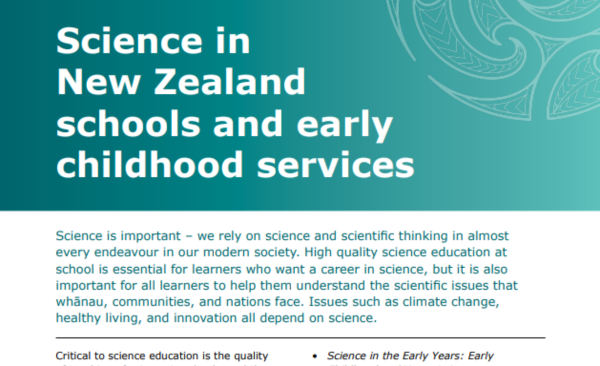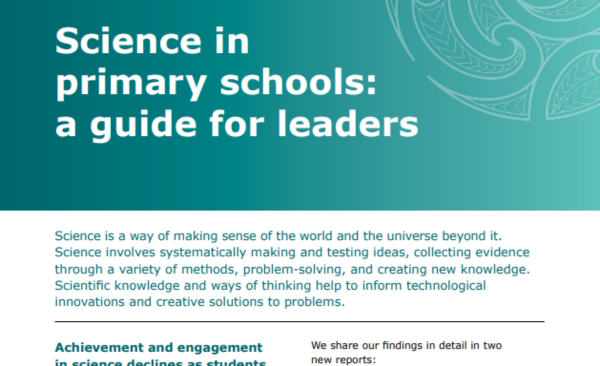
A guide for parents and whānau on supporting science in primary school
Summary:
Learning science in the primary school years helps children become better problem solvers and critical thinkers. Children are curious by nature and are eager to explore, question, experiment, and learn about the world around them. Primary school teachers can use a variety of approaches when teaching science, that give children opportunities to explore, experiment, and express new ideas. This short guide for parents and whānau of children in primary school draws from ERO’s two new reports on science: Science in the Early Years: Early Childhood and Years 1-4; and Growing Curiosity: Teaching Strategies to Engage Years 5 to 11 Students in Science, and aims to help you: understand why science matters for this age group; know what you can expect for science teaching and learning for your child; think about how you can support your child’s learning journey in science.




